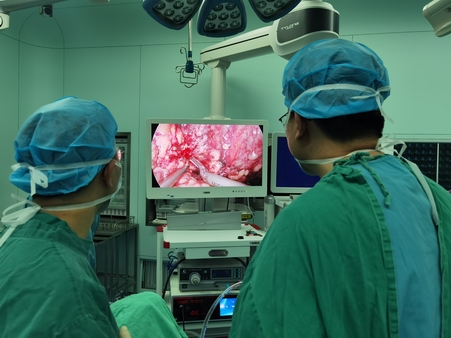The Role of the Laparoscopic Surgery Camera in Minimally Invasive Surgery
Laparoscopic surgery, also known as minimally invasive surgery, has revolutionized the field of surgery by allowing for procedures to be performed through small incisions, resulting in less pain, reduced scarring, and shorter recovery times for patients. Central to the success of laparoscopic surgery is the laparoscopic surgery camera, which provides a magnified view of the surgical field, enabling surgeons to perform procedures with great accuracy and precision. In this essay, we will explore the role of the laparoscopic surgery camera in minimally invasive surgery.

The laparoscopic surgery camera is a key component of the laparoscopic surgery system, which also includes the laparoscope, insufflation system, and surgical instruments. The camera is inserted into the patient's body through a small incision and provides a high-definition, magnified view of the surgical field on a video monitor.
The laparoscopic surgery camera has many advantages over traditional open surgery. It allows for smaller incisions, which reduces pain and the risk of infection. Additionally, the camera provides a clear view of the surgical field, which enables the surgeon to perform procedures with greater accuracy and precision.
One of the main advantages of the laparoscopic surgery camera is its ability to provide a 3D view of the surgical field. This enhances depth perception, allowing the surgeon to accurately manipulate surgical instruments and perform complex procedures. The camera also provides a wider field of view than traditional open surgery, which enables the surgeon to see areas of the body that are difficult to access with open surgery.
The laparoscopic surgery camera is used in a wide range of procedures, including gallbladder removal, hernia repair, and appendectomy. It is also used in more complex procedures such as colorectal surgery, bariatric surgery, and urologic surgery. The laparoscopic surgery camera has enabled the development of new surgical techniques that were not possible with traditional open surgery, such as single-incision laparoscopic surgery.
Despite its many advantages, the laparoscopic surgery camera does have some limitations. It can be difficult to use in patients who have a lot of abdominal fat, and it can be challenging to see through blood and other fluids. Additionally, the camera can be affected by shadows and reflections from surgical instruments.
In conclusion, the laparoscopic surgery camera plays a critical role in minimally invasive surgery. Its ability to provide a magnified, 3D view of the surgical field enables surgeons to perform procedures with greater accuracy and precision. The laparoscopic surgery camera has revolutionized the field of surgery, leading to less invasive procedures, reduced pain, and faster recovery times for patients. As technology continues to advance, it is likely that the role of the laparoscopic surgery camera in minimally invasive surgery will continue to expand.
Leave a comment